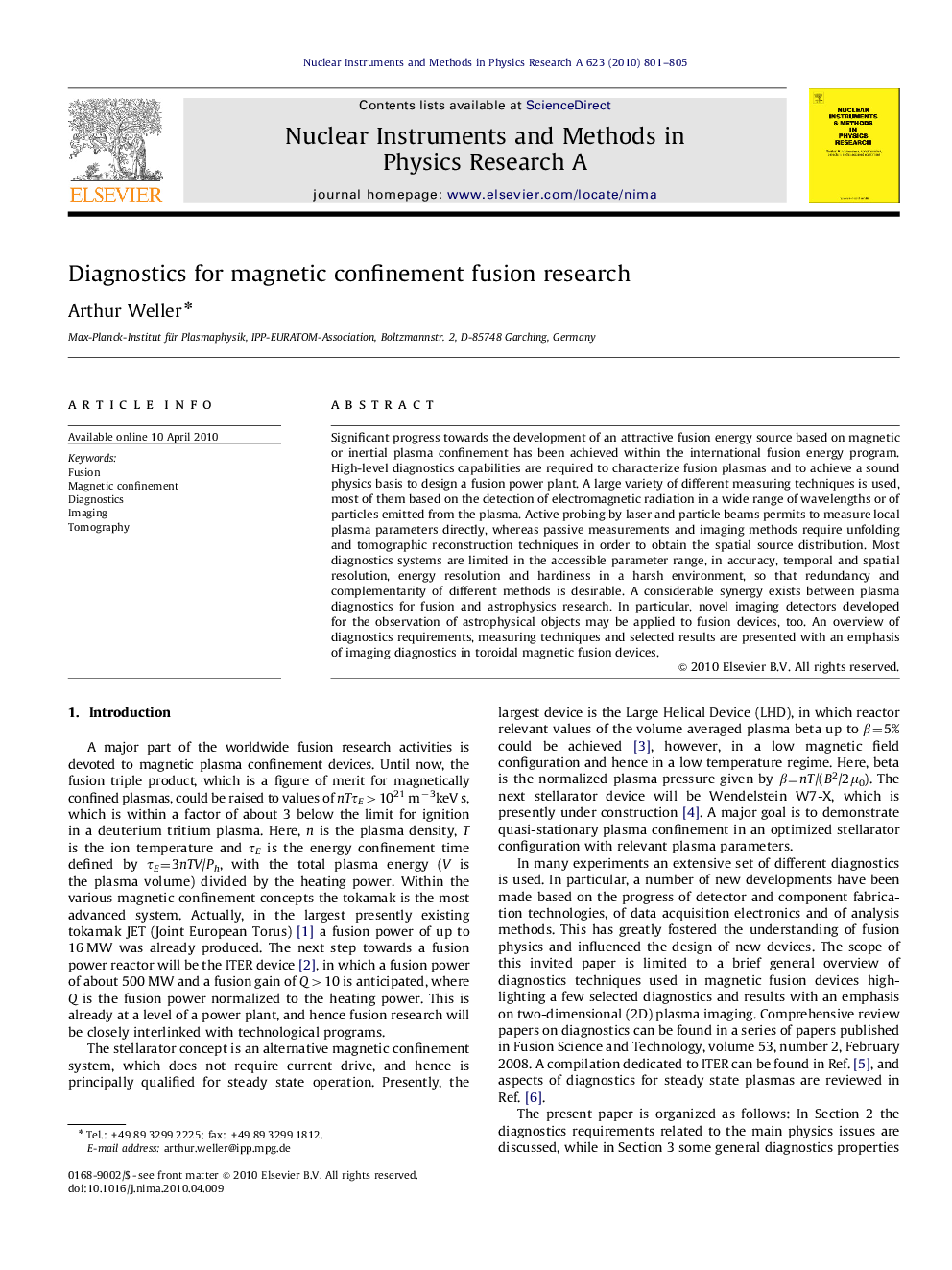| Article ID | Journal | Published Year | Pages | File Type |
|---|---|---|---|---|
| 1825928 | Nuclear Instruments and Methods in Physics Research Section A: Accelerators, Spectrometers, Detectors and Associated Equipment | 2010 | 5 Pages |
Significant progress towards the development of an attractive fusion energy source based on magnetic or inertial plasma confinement has been achieved within the international fusion energy program. High-level diagnostics capabilities are required to characterize fusion plasmas and to achieve a sound physics basis to design a fusion power plant. A large variety of different measuring techniques is used, most of them based on the detection of electromagnetic radiation in a wide range of wavelengths or of particles emitted from the plasma. Active probing by laser and particle beams permits to measure local plasma parameters directly, whereas passive measurements and imaging methods require unfolding and tomographic reconstruction techniques in order to obtain the spatial source distribution. Most diagnostics systems are limited in the accessible parameter range, in accuracy, temporal and spatial resolution, energy resolution and hardiness in a harsh environment, so that redundancy and complementarity of different methods is desirable. A considerable synergy exists between plasma diagnostics for fusion and astrophysics research. In particular, novel imaging detectors developed for the observation of astrophysical objects may be applied to fusion devices, too. An overview of diagnostics requirements, measuring techniques and selected results are presented with an emphasis of imaging diagnostics in toroidal magnetic fusion devices.
